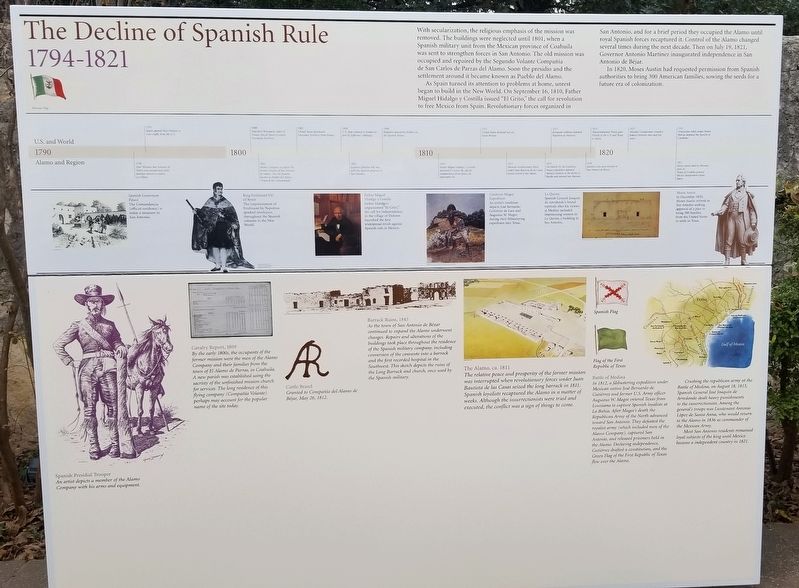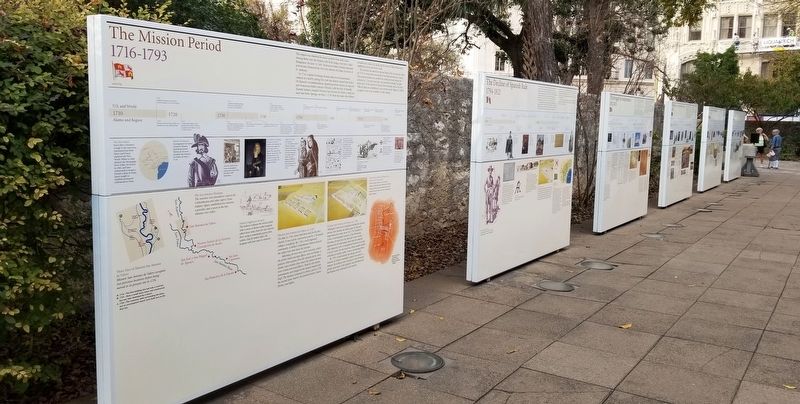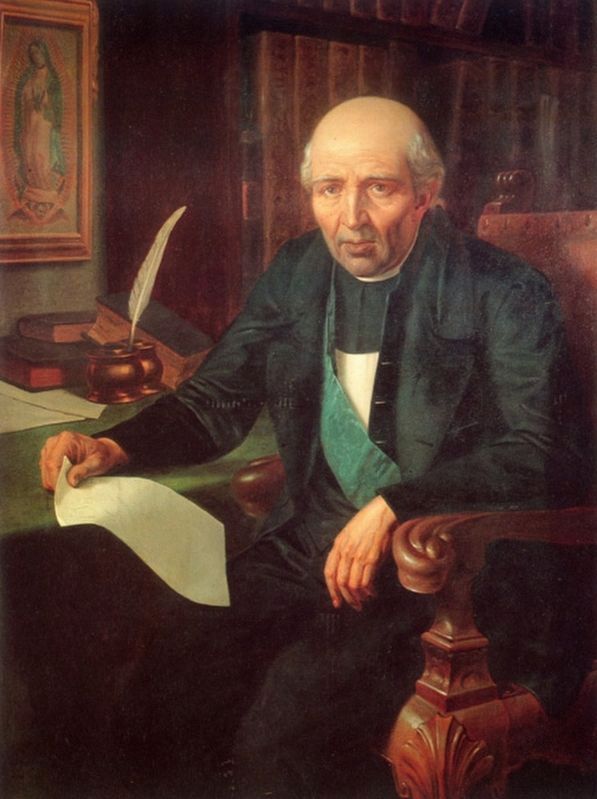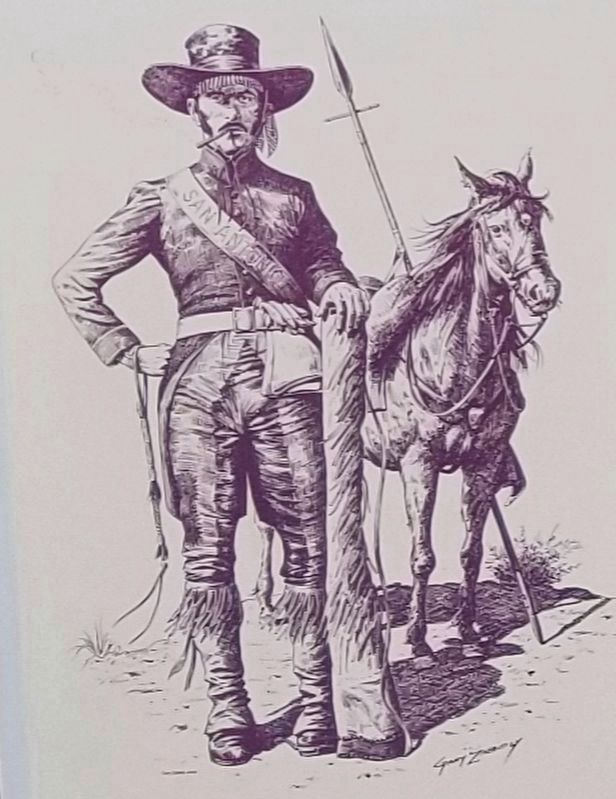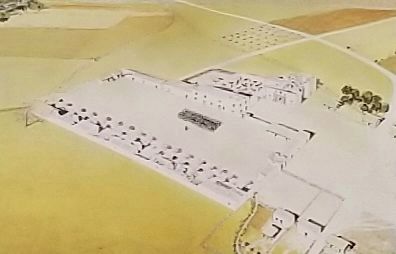Alamo Plaza in San Antonio in Bexar County, Texas — The American South (West South Central)
The Decline of Spanish Rule
1794-1821
As Spain turned its attention to problems at home, unrest began to build in the New World. On September 16, 1810, Father Miguel Hidalgo y Costilla issued "El Grito," the call for revolution to free Mexico from Spain. Revolutionary forces organized in San Antonio, and for a brief period they occupied the Alamo until royal Spanish forces recaptured it. Control of the Alamo changed several times during the next decade. Then on July 19, 1821, Governor Antonio Martínez inaugurated independence in San Antonio de Béjar.
In 1820, Moses Austin had requested permission from Spanish authorities to bring 300 American families, sowing the seeds for a future era of colonization.
[A time line contrasting events in the U.S. and World and Alamo and Region helps set the stage for undertanding the Decline of Spanish Rule period]
[Diagrams and drawings cover much of the marker and have accompanying text, which is transcribed below]
Spanish Governors Palace [see photo #1]
The Comandancia (official residence) is today a museum in San Antonio.
King Ferdinand VII of Spain [see photo #2]
The imprisonment of Ferdinand by Napoleon sparked revolution throughout the Spanish colonies in the New World.
Father Miguel Hidalgo y Costilla [see photo #3]
Father Hidalgo's impassioned "El Grito," the call for independence, in the village of Dolores launched the first widespread revolt against Spanish rule in Mexico.
Gutiérrez-Magce Expedition [see photo #4]
An artist's rendition depicts José Bernando Gutiérrez de Lara and Augustus W. Magee during their filibustering expedition into Texas.
La Quinta [see photo #5]
Spanish General Joaquin de Arredondo's brutal reprisals after his victory at Medina included imprisoning women in La Quinta, a building in San Antonio.
Moses Austin [see photo #6]
In December 1820, Moses Austin arrived in San Antonio seeking approval of a plan to bring 300 families from the United States to settle in Texas.
Spanish Presidial Trooper [see photo #7]
An artist depicts a member of the Alamo Company with his arms and equipment.
Cavalry Report, 1809 [see photo #8]
By the early 1800s,
the occupants of the former mission were the men of the Alamo Company and their families from the town of El Alamo de Parras, in Coahuila. A new parish was established using the sacristy of the unfinished mission church for services. The long residence of this flying company (Compañía Volante) perhaps may account for the popular name of the site today.
Cattle Brand [see photo #9]
Granted to Compañía del Alamo de Béjar, May 26, 1812.
Barrack Ruins, 1845 [see photo #10]
As the town of San Antonio de Bexar continued to expand the Alamo underwent changes. Repairs and alterations of the buildings took place throughout the residence of the Spanish military company, including conversion of the convento into a barrack and the first recorded hospital in the Southwest. This sketch depicts the ruins of the Long Barrack and church, once used by the Spanish military.
The Alamo, ca. 1811 [see photo #11]
The relative peace and prosperity of the former mission was interrupted when revolutionary forces under Juan Bautista de las Casas seized the long barrack in 1811. Spanish loyalists recaptured the Alamo in a matter of weeks. Although the insurrectionists were tried and executed, the conflict was a sign of things to come.
Spanish Flag [see photo #12]
Flag of the First Republic of Texas [see photo #13]
Battle of Medina [see photo #14]
In 1812, a filibustering expedition under Mexican native José Bernardo de Gutiérrez and former U.S. Army officer Augustus W. Magee entered Texas from Louisiana to capture Spanish loyalists at La Bahia, After Magee's death the Republican Army of the North advanced toward San Antonio. They defeated the royalist army (which included men of the Alamo Company), captured San Antonio, and released prisoners held in the Alamo. Declaring independence, Gutiérrez drafted a constitution, and the Green Flag of the First Republic of Texas flew over the Alamo.
Crushing the republican army at the Battle of Medina, on August 18, 1813, Spanish General José Joaquin de Arredondo dealt heavy punishments to the insurrectionists. Among the general's troops was Lieutenant Antonio López de Santa Anna, who would return to the Alamo in 1836 as commander of the Mexican Army.
Most San Antonio residents remained loyal subjects of the king until Mexico became a independent country in 1821.
Erected by The Alamo Organization and the Daughters of the Republic of Texas.
Topics. This historical marker is listed in these topic lists: Churches & Religion • Colonial Era • Forts and Castles • Hispanic Americans. A significant historical date for this entry is July 19, 1821.
Location. 29° 25.56′ N, 98° 29.163′ W. Marker is in San Antonio, Texas, in Bexar County. It is in Alamo Plaza. Marker can be reached from the intersection of Alamo Plaza and East Houston Street. Marker is one of a series found between the Convento Courtyard and the Gift Shop on the Alamo Mission compound grounds. Touch for map. Marker is at or near this postal address: 300 Alamo Plaza, San Antonio TX 78205, United States of America. Touch for directions.
Other nearby markers. At least 8 other markers are within walking distance of this marker. The Mission Period (here, next to this marker); The Struggle for Independence (here, next to this marker); The Birth of the Republic of Texas (here, next to this marker); From Republic to Early Statehood (a few steps from this marker); Japanese Monument to The Heroes of the Alamo (a few steps from this marker); Strong Foundations (a few steps from this marker); From Warehouse to Shrine (a few steps from this marker); An Archaeological Puzzle (a few steps from this marker). Touch for a list and map of all markers in San Antonio.
Credits. This page was last revised on February 2, 2023. It was originally submitted on December 22, 2021, by James Hulse of Medina, Texas. This page has been viewed 443 times since then and 42 times this year. Photos: 1, 2, 3, 4, 5. submitted on December 23, 2021, by James Hulse of Medina, Texas.
